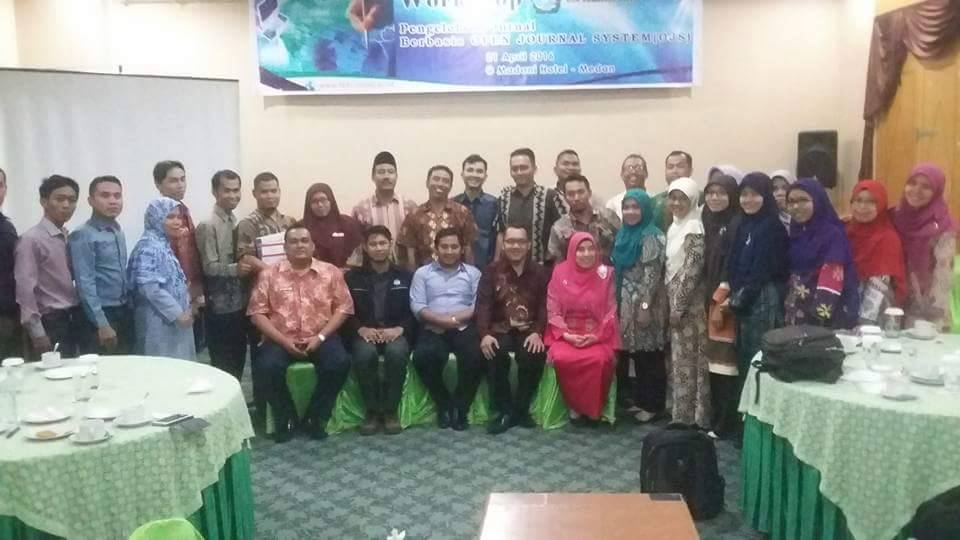KECURANGAN LAPORAN KEUANGAN DALAM PERSPEKTIF SYARIAH
Abstract
Keywords
Full Text:
PDFReferences
ACFE. (2004). Fraud. Retrieved from ACFE (Association of Certified Fraud Examiners). http://www.acfe.com/fraud-101.aspx.
Al-Atsari, A. I. (2018). Suap, Mengundang Laknat. Retrieved from Al-Manhaj. Retrieved from https://almanhaj.or.id/7004-suap-mengundang-laknat.html
Alfian, N. (2016). Nilai-Nilai Islam Dalam Upaya Pencegahan Fraud. AKTIVA Jurnal Akuntansi dan Investasi, Vol. 1. No. 2, 205-218.
Alia, C. L. (2015). Akad Yang Cacat Dalam Hukum Perjanjian Islam. Premise Law Journal, 1-17.
Awang, A. H. (2012). Gharar Dalam Perspektif Fiq Al-Hadith Analisis Terhadap ‘Illah Dan Prinsip. Jurnal Ilmiah Berimpak, 63-93.
Badri, M. A. (2017). Hadiah, Gratifikasi dan Suap. Retrieved from Komunitas Pengusaha Muslim Indonesia. Retrieved from https://pengusahamuslim.com/6003-hadiah-gratifikasi-dan-suap
Darlis. (2017). Inspirasi Al-Quran Dalam Pemberantasan Korups. Rausyan Fikr, Vol. 13, No.1, 49-72.
Fatimah, S. (2016). Analisis Praktek Tadlis Pada Masyarakat Kota Makassar (Studi Lapangan Pedagang Buahan-Buahan Di Kota Makassar). Jurnal Ilmiah BONGAYA (Manajemen & Akuntansi), 218-235.
Fauzi, A. S. (2017). Transaksi Jual-Beli Terlarang: Ghisy atau Tadlis Kualitas (Penipuan atau Kecurangan). Journal of Islamic Law, 41-54.
Fimanaya, F. &. (2014). Analysis of Factors Affecting Fraudulent Financial Statements. Diponegoro Journal of Accounting, 1-11.
Gunarsa, A. K. (2014). Perbuatan Curang, Faktor dan Dampaknya. Retrieved from Muslim.or.id. Retrieved from https://muslim.or.id/22590-perbuatan-curang-faktor-dan-dampaknya
Haryono. (2016). Risywah (Suap-Menyuap) Dan Perbedaannya Dengan Hadiah Dalam Pandangan Hukum Islam (Kajian Tematik Ayat dan Hadis Tentang Risywah). Al-Mashlahah, Jurnal Hukum Dan Pranata Sosial Islam, Vol. 4. No. 07, 429-450.
Hilal, S. (2014). Konsep Harga Dalam Ekonomi Islam (Telah Pemikiran Ibn Taimiyah). ASAS, Vol. 6. No. 2, 16-28.
Hosen, N. (2009). Analisis Bentuk Gharar Dalam Transaksi Ekonomi. Al-Iqtishad, Vol. I, No. 1.
IbnuKatsir. (2012). Tafsir Ibnu Katsir. Jakarta: Pustaka Imam asy-Syafi'i.
IbnuKatsir. (2012). Tafsir Ibnu Katsir. Jakarta: Pustaka Imam as-Syafi'i.
Jabbar, S. F. (2012). Insider Dealing: Fraud In Islam? Journal of Financial Crime , Vol. 19(Iss: 2), pp.140 – 148, 140-148.
KBBI. (2018). Kecurangan. Retrieved from KBBI (Kamus Besar Bahasa Indonesia). Jakarta.
Lessambo, F. I. (2014). Management Fraud. The International Corporate Governance System. https://doi.org/10.1057/97811373600 14_23, 326–338.
Madjid, S. S. (2018). Prinsip-Prinsip (Asas-Asas) Muamalah. J-HES Jurnal Hukum Ekonomi Syariah, Vol. 2, No. 1, 1-14.
Masruroh, N. (2015). Larangan Ihtikar di Indonesia (Kajian Tentang Efektifitas UU Anti Monopoli di Indonesia). Interest, Vol.13, 81-98.
Najamuddin. (2014). Transaksi Gharar dalam Muamalat Kontemporer. Jurnal Syariah, Vol. 2, No. 1.
Naro, A. H. (2007). Retrieved from almanhaj.or.id: https://almanhaj.or.id/2283-hukum-seputar-suap-dan-hadiah
Novrianty, S. A. (2018). Financial Statement Analysis Of Fraud With Diamond's Fraud Perspective On Property And Real Estate Sector Companies Listed On The Indonesia Stock Exchange.
Purnamasari, P. &. (2015). Fraud Prevention: Relevance To Religiosity And Spirituality In The Workplace. Procedia - social and Behavioral Sciences, 827-835.
Safuan, S. &. (2019). Modus Kecurangan & Program Anti Kecurangan di Pelabuhan (Studi Kasus Pelabuhan di Jakarta). Owner : Riset Dan Jurnal Akuntansi, 54-65.
Santosa, P. B. (2015). Larangan Jual Beli Gharar: Tela’ah Terhadap Hadis Dari Musnad Ahmad Bin Hanbal. EQUILIBRIUM, Jurnal Ekonomi Syariah, Vol. 3. No. 1, 157-173.
Septriyani, Y. &. (2018). Detecting Financial Statement Fraud with Pentagon Fraud Analysis. Jurnal Akuntansi, Keuangan Dan Bisnis, 11-23.
Sihombing, K. S. (2014). Diamond Fraud Analysis in Detecting Fraud Financial Statements: An Empirical Study on Manufacturing Companies Listed on the Indonesia Stock Exchange (IDX) 2010-2012. Diponegoro Journal of Accounting, 657-668.
Skousen, C. J. (2011). Detecting and Predicting Financial Statement Fraud: The Effectiveness of the Fraud Triangle and SAS No. 99. SSRN Electronic Journal. https://doi.org/10.2139/ssrn.1295494.
Skousen, C. J. (2011). Detecting and Predicting Financial Statement Fraud: The Effectiveness of the Fraud Triangle and SAS No. 99. SSRN Electronic Journal. https://doi.org/10.2139/ssrn.1295494.
Sumarwoto. (2014). Tinjauan Hukum Islam Terhadap Tindak Pidana Korupsi. RECHSTAAT Ilmu Hukum Fakultas Hukum UNSA, Vol. 8, no. 1, 1-14.
Syamsuri. (2011). Menggagas Fikih Anti Korupsi. Jurnal Hukum Dan Perundangan Islam, 181-206.
Syarifuddin, A. H. (2010). Mewaspadai Bahaya Korupsi. Retrieved from Al-Manhaj. Retrieved from https://almanhaj.or.id/2673-mewaspadai-bahaya-korupsi.html
Syukur, P. A. (2017). Konsep Marketing Mix Syariah. Jurnal Ekonomi dan Perbankan Syariah, Vol. 5. Jurnal Ekonomi dan Perbankan Syariah, Vol. 5, 71-94.
T.G. Calderon, J. C. (2002). A roadmap for future neural networks research in auditing and risk assessment. International Journal of Accounting Information Systems, 203-236.
Taufiq. (2016). Tadlis Merusak Prinsip ’Antaradhin Dalam Transaksi. JURIS (Jurnal Ilmiah Syariah) Vol. 15.
Wolfe, D. T. (2004). The Fraud Diamond : Considering the Four Elements of Fraud: Certified Public Accountant. The CPA Journal, 38-42.
Yurmaini. (2017). Kecurangan Akuntansi (Fraud Accounting) Dalam Perspektif Islam. Jurnal Akuntansi dan Bisnis, Vol. 3 No. 1, 93-104.
Zhou, W. &. (2011). Detecting evolutionary financial statement fraud. Decision Support Systems. https://doi.org/10.1016/j.dss.2010.08. 007, 570-575.
DOI: http://dx.doi.org/10.30829/hf.v9i2.13392
Refbacks
- There are currently no refbacks.
Indexed by:



_-_Copy3.png)














